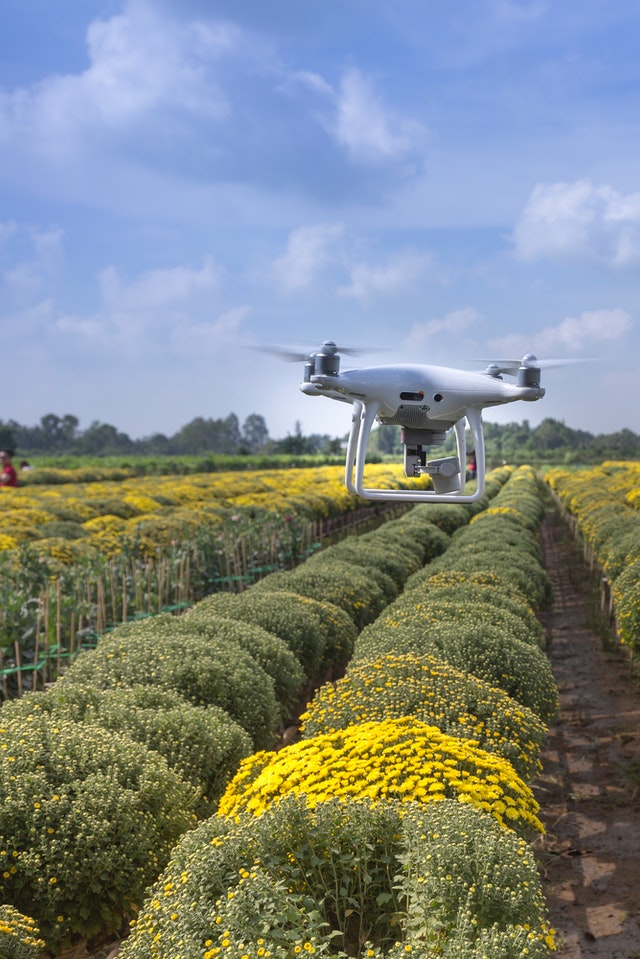Technologies and Partnering

Advanced and latest technologies should be introduced in Indian farming community for increasing the productivity. Precision farming as robotics and drone are high tech which can be used in many agricultural activities in precise manner. The major applications of drone in agriculture are irrigation, crop monitoring, soil and field analysis and bird control.
Robotics in agriculture generally represents the concept of precision agriculture also known as smart farming. It is an intervention technology that operates automated processes by monitoring the use of modern tools such as sensors, robots, and drones via continuous data analysis to optimize the farming process, time, and energy. Many robotic applications in agriculture are as navigation, grafting, picking, weeding, spraying, harvesting, etc.
Harvesting of fruits crops are being used robotic to sense the mature or ripen fruit to be harvested.
Robotics in livestock rearing or dairy management are being extensively used in European countries as Denmark, Israel, Germany etc. The robotic management of animals i.e. feeding with concentrate according their weight, robotic milking systems etc are very popular with labour less operation and untouched milk production and its supply system to consumers.
The automation or robotics in aquaculture or fish cultivation are being successfully used in developed countries with full package of practice to achieve targeted yield.
Besides, we illustrate the commercialization and challenges of real-fields applications of robots and drones including further extensive opportunities in the future.
Besides, in robotic and drone, there are yield monitor per unit area with GPS tagging as per fertility or nutrient status with grid of per m 2 and then site-specific nutrient management as per nutrient deficiency to get targeted yield through use of variable rate applicator. Though such kind of management in specific nutrient per m 2 would able to produce yield as per our target.
Spot spraying of pesticides or herbicides as per infected area of diseases or weeds/unwanted plants other than crops would be observed by sensors or high-resolution cameras and then through variable rate applicator only those area would be spayed that would reduce cost and ultimately save the environment to pollute the ground water or atmosphere too.
These technologies are need of time to enhance the productivity in which we are able to feed our explosive population in shrinking natural resources specially land, ground water and water bodies under climatic change scenario.
